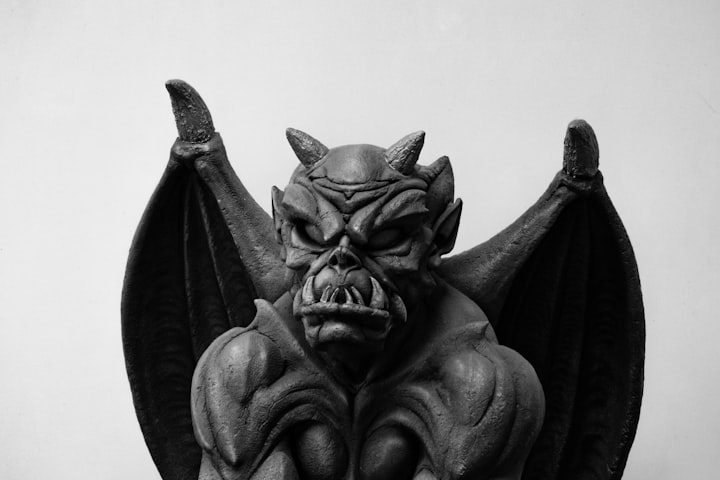The Legend of the Loch Ness Monster
horror

The Legend of the Loch Ness Monster:
The Loch Ness Monster, also known as Nessie, is a creature said to inhabit Loch Ness in Scotland. The legend of Nessie dates back to the 6th century, when Irish monk Saint Columba is said to have encountered a "water beast" in the loch. However, the modern legend of Nessie began in 1933 with a report of a sighting by a local couple. Since then, there have been numerous reported sightings and alleged photographic evidence of the creature.
Despite the lack of concrete evidence, the legend of Nessie has captured the imagination of people all over the world. Theories about the creature's identity range from a surviving plesiosaur to a giant eel or even a hoax. Here are five types of explanations that have been proposed for the Loch Ness Monster.
Plesiosaur:
Plesiosaur is a type of marine reptile that lived during the Mesozoic Era, specifically the Jurassic and Cretaceous periods. They had a long neck, small head, and four large flippers, which gave them a characteristic "swan-like" appearance. They were carnivorous and probably preyed on fish and other marine animals.
Plesiosaur went extinct around 66 million years ago, along with the dinosaurs, but some people believe that a population of plesiosaurs may have survived in Loch Ness, Scotland, and that the Loch Ness Monster, also known as Nessie, could be a surviving plesiosaur. This theory is based on the similarities in shape and size between the reported sightings of Nessie and the anatomy of plesiosaurs. However, this theory is considered unlikely by scientists and experts due to the lack of evidence and the unlikelihood of a population of plesiosaurs surviving undetected for millions of years in a freshwater lake.
Giant Eel:
The theory that the Loch Ness Monster is a giant eel is based on the fact that Loch Ness is home to a large population of eels, and some alleged sightings describe a serpentine creature with a small head. Eels are known for their elongated, snake-like body shape and can grow to be quite large, with the European eel reaching up to 4-5 feet in length.
The theory suggests that Nessie could be a species of eel that has yet to be discovered and that has evolved to grow to enormous sizes, possibly as a result of the isolation of the loch and the lack of natural predators. Some proponents of this theory point to the existence of other giant eels in other freshwater bodies around the world, such as the conger eel in Lake Ontario, Canada.
However, this theory is also considered unlikely by scientists, as the eel's anatomy and behavior does not match with many of the reported sightings of Nessie, such as having a hump and a long neck. Additionally, eels are not known to swim on surface of the water, and many of the reported sightings of Nessie describe it as "breaking the surface" of the water, which is not typical behavior for an eel.
Hoax:
The theory that the Loch Ness Monster is a hoax suggests that the reported sightings and alleged photographic evidence of Nessie are not real and have been fabricated for various reasons such as boosting tourism or seeking fame or fortune. This theory is supported by the fact that many of the reported sightings and alleged photographic evidence of Nessie have been debunked as hoaxes or misidentifications.
One of the most famous examples is the "Surgeon's Photograph" of 1934, which purports to show Nessie's head and neck. This photograph was later revealed to be a hoax created by a gynecologist named Robert Wilson and his friend, a big game hunter named Marmaduke Wetherell. They used a toy submarine with a model of a plesiosaur's head attached to it.
Additionally, many experts have pointed out that the Loch Ness Monster is a classic example of the "Frequency Illusion" - the phenomenon where something is observed more often after it has been noticed for the first time. People tend to see what they expect to see and are more likely to report a sighting of Nessie after hearing about the legend, even if what they saw was a regular object or animal.
In conclusion, the theory that the Loch Ness Monster is a hoax is supported by the lack of concrete evidence and the fact that many of the reported sightings and alleged photographic evidence have been debunked as hoaxes or misidentifications.
Giant Catfish:
The theory that the Loch Ness Monster is a giant catfish is based on the fact that catfish are known for their large size, elongated body shape, and ability to survive in freshwater environments. Some proponents of this theory suggest that Nessie could be a species of giant catfish that has yet to be discovered and that has evolved to grow to enormous sizes, possibly as a result of the isolation of the loch and the lack of natural predators.
Catfish are known for their elongated, cylindrical body shape and can grow to be quite large, with the Mekong giant catfish, for example, reaching up to 9 feet in length and weighing up to 600 pounds. They are also known for their ability to survive in freshwater environments, and they can be found in rivers and lakes around the world.
However, this theory is also considered unlikely by scientists, as the catfish's anatomy and behavior does not match with many of the reported sightings of Nessie, such as having a hump and a long neck. Additionally, catfish are not known to swim on the surface of the water, and many of the reported sightings of Nessie describe it as "breaking the surface" of the water, which is not typical behavior for a catfish.
Cryptid:
A Cryptid is a creature or organism that is claimed to exist but for which there is no scientific evidence. The Loch Ness Monster is considered a cryptid because, despite numerous reported sightings and alleged photographic evidence, there is no concrete proof of its existence.
The idea of a cryptid is often associated with the Loch Ness Monster because it is one of the most famous examples of a creature whose existence is debated by scientists and experts. Theories about Nessie's identity range from a surviving plesiosaur or giant eel to a giant catfish, however, none of these theories have been proven and the creature's existence is still debated.
Many people are fascinated by the idea of a cryptid and the possibility that it may exist, and this fascination is often fueled by the mystery and intrigue surrounding the creature. The Loch Ness Monster has become a cultural icon and has inspired countless books, films, and documentaries, as well as drawing thousands of visitors to the area each year, in search of a glimpse of the elusive creature.
In conclusion, the Loch Ness Monster is considered a Cryptid, a creature whose existence is not scientifically proven, but for which there is a significant amount of reported sightings and alleged photographic evidence. Theories about its identity vary, but none have been proven, and its existence remains a mystery.






Comments
There are no comments for this story
Be the first to respond and start the conversation.